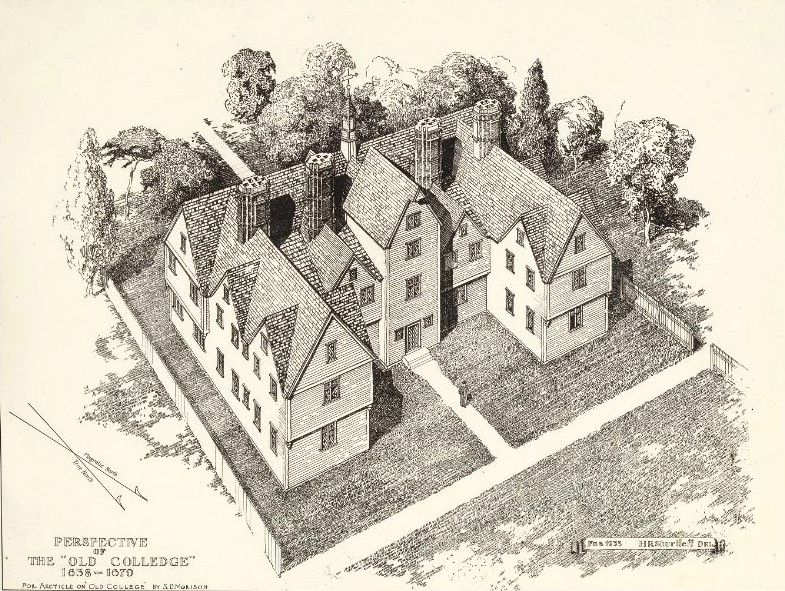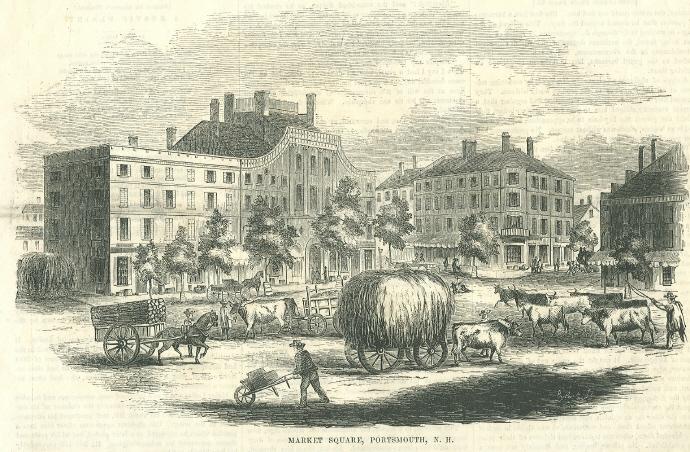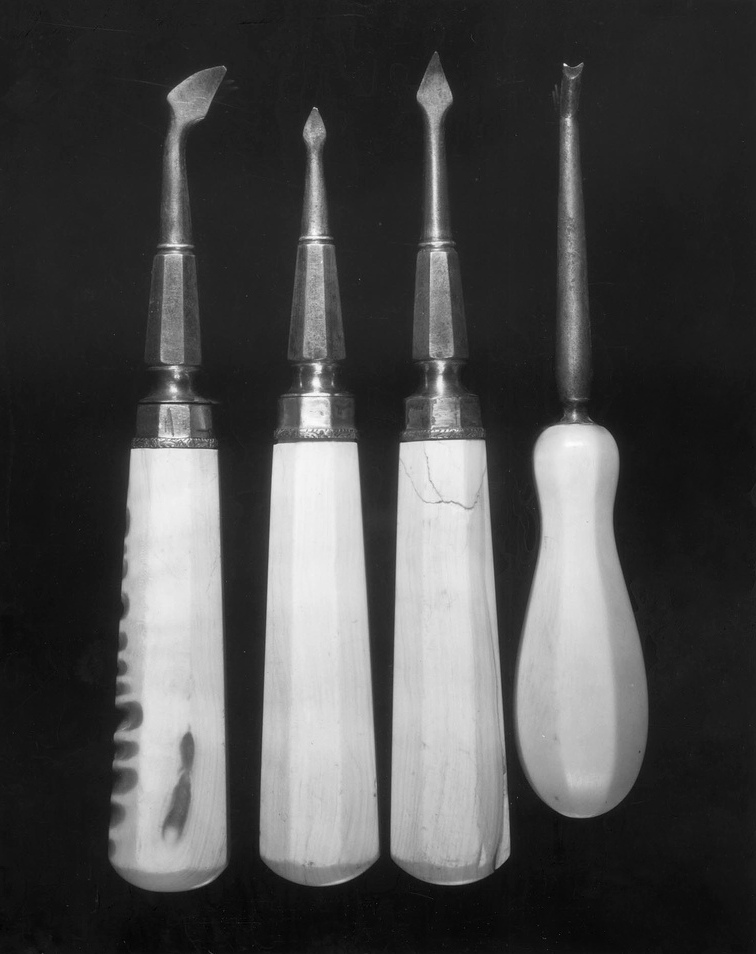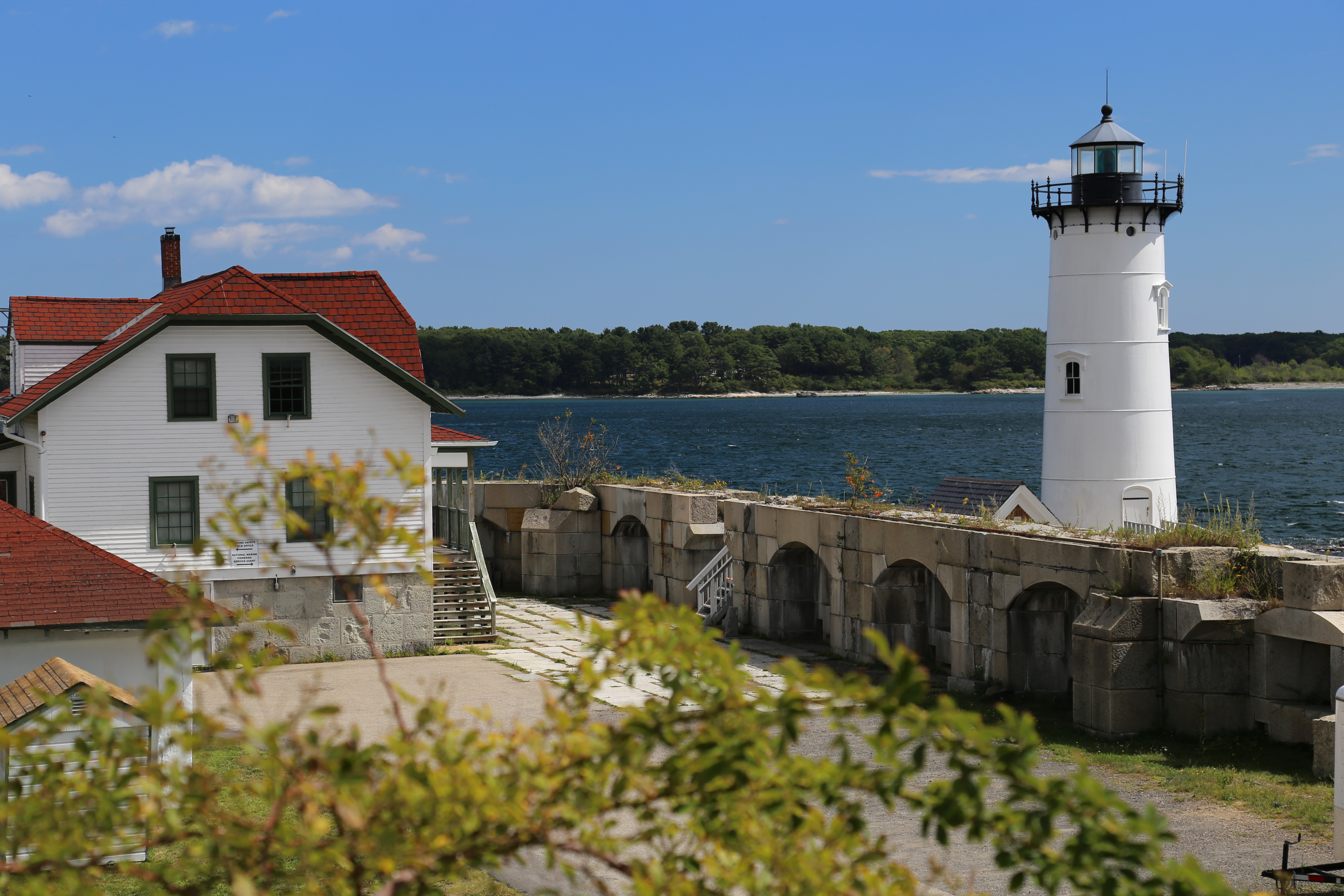|
List Of New Hampshire Historical Markers (1–25)
This page is one of a series of pages that list New Hampshire historical markers. The text of each marker is provided within its entry. __NOTOC__ Markers 1 to 25 . Republic of Indian Stream :Town of Pittsburg "In 1832 the settlers of the area between Indian Stream and Hall's Stream, claimed by both Canada and the United States, set up the independent republic of Indian Stream. Yielding to New Hampshire in 1836, Indian Stream became part of Pittsburg and in 1842 was recognized by treaty as United States territory." . Fort at No. 4 :Town of Charlestown "In 1744 the settlers at No. 4 (now Charlestown) built a great log fort enclosing many of the town's dwellings. The fort, northernmost in the Connecticut Valley, was besieged in 1747 by a large force of French and Indians, who were beaten off by the 31-man garrison in a 3-day battle. The fort was never again attacked." . Birthplace of Horace Greeley :Town of Amherst "About five miles north of Amherst is the birthplace of Hor ... [...More Info...] [...Related Items...] OR: [Wikipedia] [Google] [Baidu] |
New Hampshire Historical Markers
The U.S. state of New Hampshire has, since 1958, placed historical markers at locations that are deemed significant to New Hampshire history. The New Hampshire Division of Historical Resources (DHR) and the Department of Transportation (DOT) are jointly responsible for the historical marker program. The program is authorized bRSA 227 C:4, X an , online documents maintained by DHR list 276 markers. Markers New Hampshire's historical markers are green with white text; the state seal sits atop each one. Generally, there is a title line and up to 12 lines of text, each of which has no more than 45 characters. Some markers note the year they were installed—it may be centered under the main text (early 2000s to present) or right-justified under the main text (1980s through early 2000s), although there are some visible exceptions—while on older markers it is not listed. Any individual or group may propose a marker to commemorate significant New Hampshire places, persons, or events. ... [...More Info...] [...Related Items...] OR: [Wikipedia] [Google] [Baidu] |
Charlestown, New Hampshire
Charlestown is a town in Sullivan County, New Hampshire, United States. The population was 4,806 at the 2020 census, down from 5,114 at the 2010 census. The town is home to Hubbard State Forest and the headquarters of the Student Conservation Association. The primary village in town, where 1,078 people resided at the 2020 census, is defined as the Charlestown census-designated place (CDP) and is located along New Hampshire Route 12. The town also includes the villages of North Charlestown, South Charlestown and Hemlock Center. History The area was first granted on December 31, 1735,Article i''Statistics and Gazetteer of New-Hampshire (1875)/ref> by colonial governor Jonathan Belcher of Massachusetts as "Plantation No. 4", the fourth in a line of townships on the Connecticut Rivers. Settled in 1740, it was the northernmost township, and its 1744 stockade now known as Fort at Number 4 became a strategic military site. On the evening of May 2, 1746, Seth Putnam joined Major Josi ... [...More Info...] [...Related Items...] OR: [Wikipedia] [Google] [Baidu] |
Harvard College
Harvard College is the undergraduate college of Harvard University, an Ivy League research university in Cambridge, Massachusetts. Founded in 1636, Harvard College is the original school of Harvard University, the oldest institution of higher learning in the United States and among the most prestigious in the world. Part of the Faculty of Arts and Sciences, Harvard College is Harvard University's traditional undergraduate program, offering AB and SB degrees. It is highly selective, with fewer than five percent of applicants being offered admission in recent years. Harvard College students participate in more than 450 extracurricular organizations and nearly all live on campus—first-year students in or near Harvard Yard, and upperclass students in community-oriented "houses". History The school came into existence in 1636 by vote of the Great and General Court of the Massachusetts Bay Colony—though without a single building, instructor, or student. In 1638, the colleg ... [...More Info...] [...Related Items...] OR: [Wikipedia] [Google] [Baidu] |
Wakefield, New Hampshire
Wakefield is a town in Carroll County, New Hampshire, United States. The population was 5,201 at the 2020 census. The town includes the villages of Wakefield Corner (the original town center), East Wakefield, North Wakefield, Sanbornville, Union, Woodman and Province Lake. Wakefield Corner, popular with tourists, is a picturesque hilltop village of antique buildings. The state of Maine is on the eastern border of Wakefield. History Initially a native settlement, Wakefield was attacked by John Lovewell during Father Rale's War. Settled later by colonists from Dover and Somersworth, the town was granted in 1749 by John Mason. It was called "East Town" before being incorporated as Wakefield in 1774 by Governor John Wentworth. Wakefield, in Yorkshire, England, is near Wentworth Castle, the home of the Wentworth ancestors. The New Hampshire town developed as an important sledge and stage stop between the seacoast and the White Mountains. The Wakefield Inn, built in 1804 beside ... [...More Info...] [...Related Items...] OR: [Wikipedia] [Google] [Baidu] |
American Revolution
The American Revolution was an ideological and political revolution that occurred in British America between 1765 and 1791. The Americans in the Thirteen Colonies formed independent states that defeated the British in the American Revolutionary War (1775–1783), gaining independence from the British Crown and establishing the United States of America as the first nation-state founded on Enlightenment principles of liberal democracy. American colonists objected to being taxed by the Parliament of Great Britain, a body in which they had no direct representation. Before the 1760s, Britain's American colonies had enjoyed a high level of autonomy in their internal affairs, which were locally governed by colonial legislatures. During the 1760s, however, the British Parliament passed a number of acts that were intended to bring the American colonies under more direct rule from the British metropole and increasingly intertwine the economies of the colonies with those of Brit ... [...More Info...] [...Related Items...] OR: [Wikipedia] [Google] [Baidu] |
Portsmouth, New Hampshire
Portsmouth is a city in Rockingham County, New Hampshire, United States. At the 2020 census it had a population of 21,956. A historic seaport and popular summer tourist destination on the Piscataqua River bordering the state of Maine, Portsmouth was formerly the home of the Strategic Air Command's Pease Air Force Base, since converted to Portsmouth International Airport at Pease. History American Indians of the Abenaki and other Algonquian languages-speaking nations, and their predecessors, inhabited the territory of coastal New Hampshire for thousands of years before European contact. The first known European to explore and write about the area was Martin Pring in 1603. The Piscataqua River is a tidal estuary with a swift current, but forms a good natural harbor. The west bank of the harbor was settled by European colonists in 1630 and named Strawbery Banke, after the many wild strawberries growing there. The village was protected by Fort William and Mary on what is now ... [...More Info...] [...Related Items...] OR: [Wikipedia] [Google] [Baidu] |
Paul Revere
Paul Revere (; December 21, 1734 O.S. (January 1, 1735 N.S.)May 10, 1818) was an American silversmith, engraver, early industrialist, Sons of Liberty member, and Patriot and Founding Father. He is best known for his midnight ride to alert the colonial militia in April 1775 to the approach of British forces before the battles of Lexington and Concord, as dramatized in Henry Wadsworth Longfellow's 1861 poem, "Paul Revere's Ride". At age 41, Revere was a prosperous, established and prominent Boston silversmith. He had helped organize an intelligence and alarm system to keep watch on the British military. Revere later served as a Massachusetts militia officer, though his service ended after the Penobscot Expedition, one of the most disastrous campaigns of the American Revolutionary War, for which he was absolved of blame. Following the war, Revere returned to his silversmith trade. He used the profits from his expanding business to finance his work in iron casting, bronze ... [...More Info...] [...Related Items...] OR: [Wikipedia] [Google] [Baidu] |
New Castle, New Hampshire
New Castle is a New England town, town in Rockingham County, New Hampshire, Rockingham County, New Hampshire, United States. The population was 1,000 at the 2020 census. It is the smallest and easternmost town in New Hampshire, and the only one located entirely on islands. It is home to Fort William and Mary#Fort Constitution, Fort Constitution Historic Site, Fort Stark Historic Site, and the New Castle Common, a recreation area on the Atlantic Ocean. New Castle is also home to a United States Coast Guard station, as well as the historic Wentworth by the Sea hotel. History The main island on which the town sits is the largest of several at the mouth of the Piscataqua River and was originally called "Great Island". Settled in 1623, an earthwork defense was built on Fort Point which would evolve into Fort William and Mary (rebuilt in 1808 as Fort Constitution). Chartered in 1679 as a parish of Portsmouth, New Hampshire, Portsmouth, it was incorporated on May 30, 1693, and was name ... [...More Info...] [...Related Items...] OR: [Wikipedia] [Google] [Baidu] |
Fort William And Mary
Fort William and Mary was a colonial fortification in Britain's worldwide system of defenses, defended by soldiers of the Province of New Hampshire who reported directly to the royal governor. The fort, originally known as "The Castle," was situated on the island of New Castle, New Hampshire, at the mouth of the Piscataqua River estuary. It was renamed Fort William and Mary circa 1692, after the accession of the monarchs William III and Mary II to the British throne.Roberts, pp. 498-499 It was captured by Patriot forces, recaptured, and later abandoned by the British in the Revolutionary War. The fort was renamed Fort Constitution in 1808 following rebuilding. The fort was further rebuilt and expanded through 1899 and served actively through World War II. Colonial period First fortified by the British prior to 1632, the fort guarded access to the harbor at Portsmouth and served as the colony's main munitions depot. The fort also served to protect Kittery, Maine, on the oppo ... [...More Info...] [...Related Items...] OR: [Wikipedia] [Google] [Baidu] |
1872 United States Presidential Election
The 1872 United States presidential election was the 22nd quadrennial presidential election, held on Tuesday, November 5, 1872. Despite a split in the Republican Party, incumbent President Ulysses S. Grant defeated Democratic-endorsed Liberal Republican nominee Horace Greeley. Grant was unanimously re-nominated at the 1872 Republican National Convention, but his intra-party opponents organized the Liberal Republican Party and held their own convention. The 1872 Liberal Republican convention nominated Greeley, a New York newspaper publisher, and wrote a platform calling for civil service reform and an end to Reconstruction. Democratic Party leaders believed that their only hope of defeating Grant was to unite around Greeley, and the 1872 Democratic National Convention nominated the Liberal Republican ticket. Despite the union between the Liberal Republicans and Democrats, Greeley proved to be an ineffective campaigner and Grant remained widely popular. Grant decisively won r ... [...More Info...] [...Related Items...] OR: [Wikipedia] [Google] [Baidu] |
New York Tribune
The ''New-York Tribune'' was an American newspaper founded in 1841 by editor Horace Greeley. It bore the moniker ''New-York Daily Tribune'' from 1842 to 1866 before returning to its original name. From the 1840s through the 1860s it was the dominant newspaper first of the American Whig Party, then of the Republican Party. The paper achieved a circulation of approximately 200,000 in the 1850s, making it the largest daily paper in New York City at the time. The ''Tribune''s editorials were widely read, shared, and copied in other city newspapers, helping to shape national opinion. It was one of the first papers in the north to send reporters, correspondents, and illustrators to cover the campaigns of the American Civil War. It continued as an independent daily newspaper until 1924, when it merged with the ''New York Herald''. The resulting '' New York Herald Tribune'' remained in publication until 1966. Among those who served on the paper's editorial board were Bayard Taylor, Ge ... [...More Info...] [...Related Items...] OR: [Wikipedia] [Google] [Baidu] |
Amherst, New Hampshire
Amherst is a town in Hillsborough County in the state of New Hampshire, United States. The population was 11,753 at the 2020 census. Amherst is home to Ponemah Bog Wildlife Sanctuary, Hodgman State Forest, the Joe English Reservation and Baboosic Lake. The village of Amherst, where 697 people lived at the 2020 census, is defined as the Amherst census-designated place and is listed on the National Register of Historic Places as Amherst Village Historic District. History Like many towns in New England, Amherst was founded via a land grant issued to members of the colonial militia; the land grant which led to the town's foundation was issued in 1728 to veterans of King Philip's War. A colonial settlement was established at the land grant's location five years later in 1733, being initially named "Narragansett Number 3" and later "Souhegan Number 3". In 1741, the settlement's inhabitants established a Congregational church and hired a minister to preach in the settlement. On Janu ... [...More Info...] [...Related Items...] OR: [Wikipedia] [Google] [Baidu] |
.jpg)






